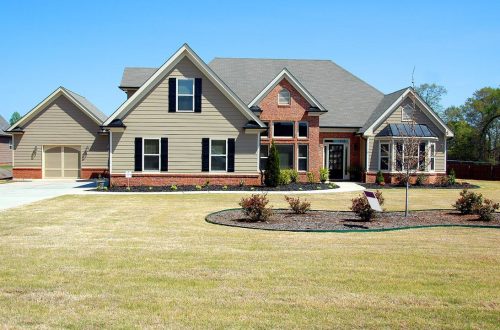
Homeowners Insurance Binder: Do You Need One?
Homeowners insurance is required by mortgage lenders and provides important protection for property owners. When purchasing a new home, a homeowners insurance binder can serve as required proof of insurance for lenders. This guide to a homeowners insurance binder explains what it is and why it’s necessary.
What is a homeowners insurance binder?
A homeowners insurance binder is an agreement between an insurance company and a person who is buying a home. It’s a temporary contract detailing what insurance coverage will be provided for the home, and it offers coverage to the homeowner until a formal policy is issued.
Homeowners insurance binders contain details about what types of coverage the insurer will provide on the property. The binder can serve as proof of required insurance coverage. Lenders mandate this type of proof when issuing a mortgage.
When the mortgage goes through underwriting — which is the process of assessing the risk associated with the loan — the underwriter will look at the homeowners insurance binder. The goal is to make sure there is sufficient insurance coverage to protect the home that is serving as collateral for the loan. (Collateral is an item of value you can use to get a loan, like a mortgage. If you don’t pay your debt, the lender can take your collateral to get their money back.)
Tip
A homeowners insurance binder is not the same thing as an insurance declaration page. When the declaration page becomes available, the binder will expire. At that time, the declaration page will dictate the terms of coverage that is now in place.
Who needs a homeowners insurance binder?
A person who is buying a house needs a homeowners insurance binder. Here’s how it typically works:
- The home buyer pays their first month’s premiums for the property.
- The insurer provides the binder that serves as temporary proof of coverage.
- This proof is provided to the lender during the mortgage underwriting process.
Mortgage lenders require people to get home insurance binders when a formal policy has not yet been issued because the home guarantees the loan. If the property owner does not pay the mortgage, the lender could foreclose. The binder means the lender’s risk is limited. The lender wants to make certain insurance coverage is in place to protect the home so that if the collateral is destroyed, the lender still gets paid.
In some cases, home buyers who apply for a policy early enough before purchasing a home will have official coverage in place and receive their declaration page before closing. If that is the case, a homeowners insurance binder may not be needed. Under these circumstances, the policyholder can provide the insurance declaration page to the lender to provide proof of insurance.
When is a homeowners insurance binder used?
A homeowners insurance binder is used temporarily when a person is buying a new home. It provides proof of homeowners insurance coverage for a lender and provides temporary insurance coverage for the property owner until a formal policy is in place.
Typically, a homeowners insurance binder will expire within 30 to 90 days. The homeowner will have coverage as outlined in the binder until that time. After the policy is formally issued and there is an insurance declaration page, the binder will no longer be needed.
What’s included in a homeowners insurance binder?
A homeowners insurance binder details the terms of temporary insurance coverage. Here are some of the clauses that are typically included.
The named insured
The homeowners insurance binder details who owns the policy. This will typically be the owner(s) of the home.
The loss payee
The loss payee is also included in the homeowners insurance binder. This is the person or company that gets first right to compensation from claims filed.
Usually a mortgage lender is named as the loss payee. The lender is typically compensated first by the insurer if the home is destroyed. Homeowners receive what’s left over after the mortgage is paid off.
The name of the insurance company
A homeowners insurance binder includes information on the company that is providing the home insurance policy. The contact details for the insurer will also be included.
Information on coverage purchased
The homeowners insurance binder specifies the types of coverage that were purchased on the property.
Coverages can include:
- Dwelling coverage, which covers the structure of the home itself. This is the main provision mortgage lenders focus on.
- Other structures coverage, which covers other buildings and structures on the property outside of the home (for example, a detached garage).
- Personal property coverage, which covers the personal property of the homeowner. Lenders may not require this, but it’s often good to purchase it, as few homeowners can afford to replace all their possessions when a covered loss happens.
- Liability insurance, which provides coverage to anyone who is hurt while visiting the home or who is injured by the homeowner’s pet.
Coverage limits
A homeowners insurance binder will also include coverage limits. For example, the policy will pay out only up to a certain dollar amount. Lenders want to make sure the coverage limit is large enough that the mortgage could be repaid in full in the event the home is destroyed.
Perils the policy insures against
The homeowners insurance binder also specifies whether the policy is an open peril or named peril policy.
- If it is an open peril policy: It will cover all losses that are not specifically excluded.
- If it is a named peril policy: It will only cover losses caused by certain specified disasters, such as a fire.
How do you get a homeowners insurance binder?
After a home buyer has applied for a home insurance policy and paid the first month’s homeowner’s insurance premiums, they can get a homeowners insurance binder from the homeowners insurance company.
Home buyers can shop around to get quotes from several insurers before applying for a policy to make sure they get the best price. Buyers also need to provide details about the property being purchased that they want to insure.
Homeowners can contact the insurer directly to request a copy of the binder if they don’t receive it once the temporary policy has been issued and paid for.
Get A Homeowners Insurance Quote Here
For an affordable homeowners insurance quote, contact us today by calling (541) 318-8835 or click here to connect with us online.




